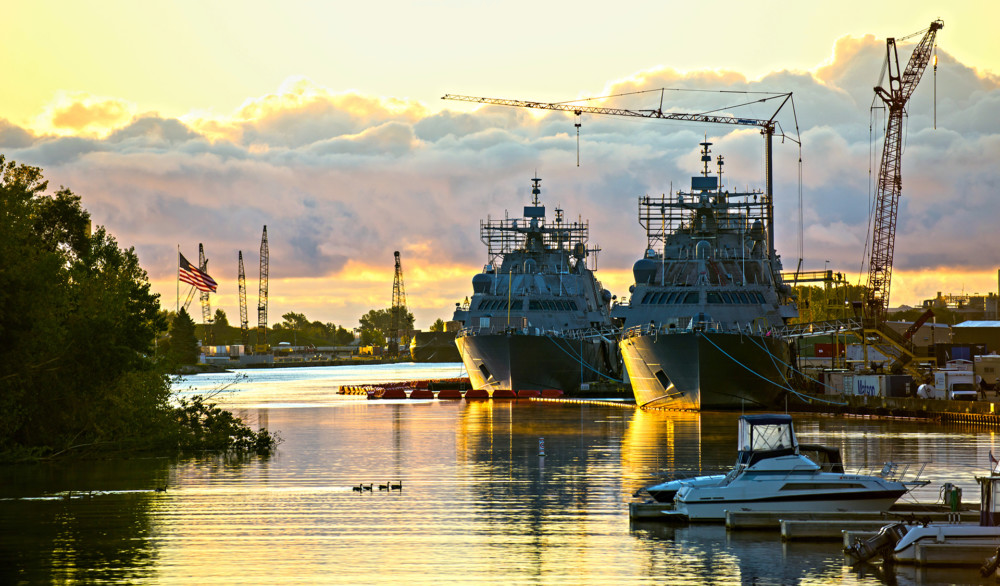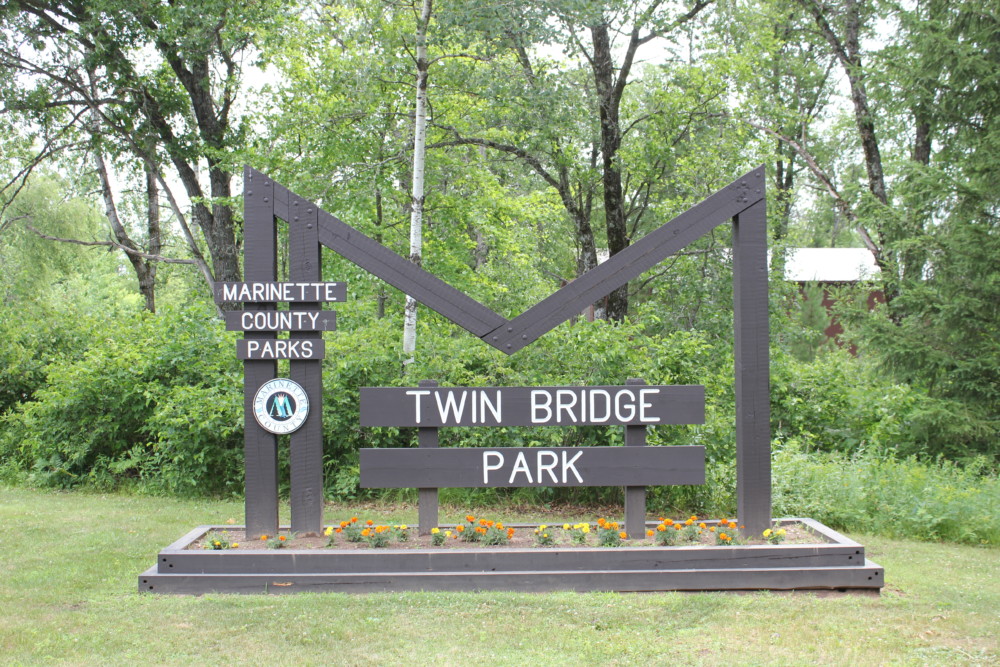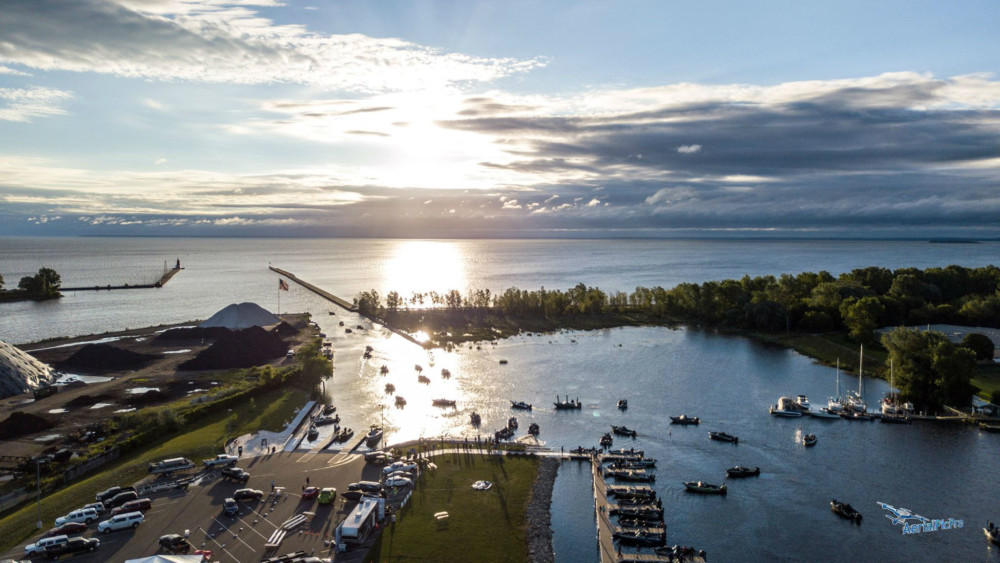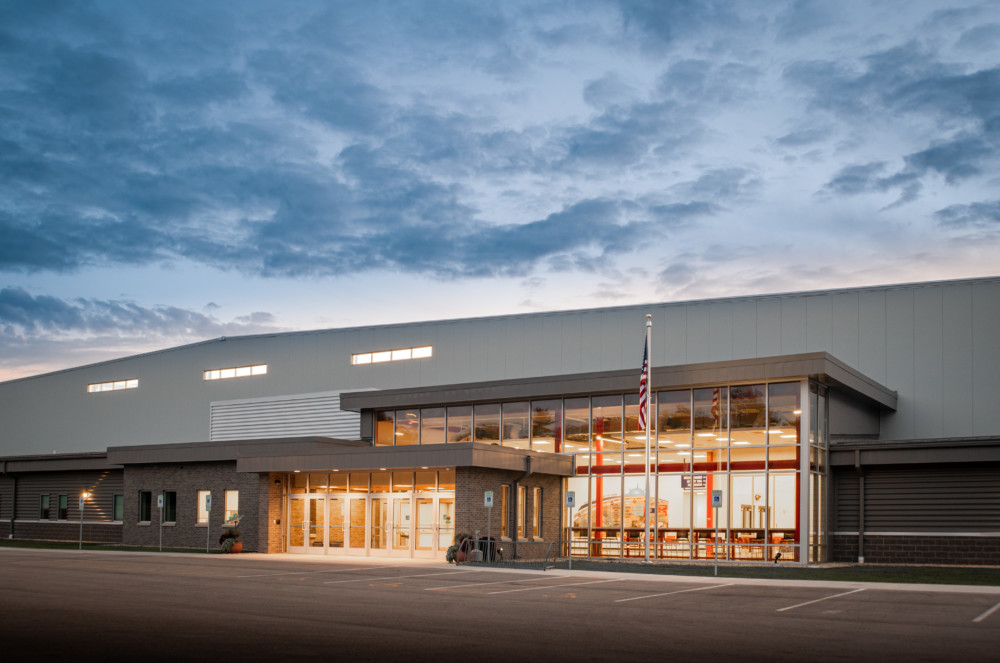Worth the Drive: Marinette County
 With the advantages of a bustling, burgeoning county seat juxtaposed with 231,000 acres of county forest and exceptional inland waters – including lakes, trout streams and waterfalls – the city of Marinette and greater Marinette County are a vacationer’s paradise.
With the advantages of a bustling, burgeoning county seat juxtaposed with 231,000 acres of county forest and exceptional inland waters – including lakes, trout streams and waterfalls – the city of Marinette and greater Marinette County are a vacationer’s paradise.
“We’re a unique area that’s not often thought about,” says the city of Marinette’s former marketing and tourism director Melissa Ebsch. “Our city is thriving … Between our REC center and our world-class fishing and all the amenities we offer here, I can see tourism in Marinette growing.”
Located on the shores of Green Bay bordering the Upper Peninsula of Michigan about an hour and a half from the Fox Cities, Marinette County is becoming a favorite destination for many city dwellers.
“I get really excited to see how much the area is growing tourism wise,” adds Autumn Rockhill, Marinette County Tourism and Development program assistant. “There are a lot of new things starting to come in the area; we’re only an hour away from Green Bay and we’re right on the Michigan border. It’s a really great place to take a day trip or come and spend the week if you’re from farther away.”
Whether you’re there to enjoy shopping, delicious food and a quick pace at one of Marinette’s welcoming businesses, or you want to go the more laid-back route among the thousands of acres of county forest and experience what makes Marinette County the Waterfall Capital of Wisconsin, Marinette and Marinette County are worth the drive.
Attractions
Begin Your Visit Where Marinette Began: Menekaunee Harbor
Start your visit to Marinette County with a stop at one of its historical landmarks – Menekaunee Harbor in the city of Marinette. While the harbor now features a new park and was recently dredged and redesigned in a multi-million dollar renovation, the greater Menominee River Basin was first inhabited by a small Algonquin tribe known as “the wild rice people.”
By the early 1820s, the Menominee numbered about 500 men and were scattered among a dozen villages in Wisconsin. The area was visited by explorers, fur traders and missionaries who passed through the bay of Green Bay and the Menominee River. Fur trader William Farnsworth arrived in the area in 1822. Along with his common-law wife Marinette Chevalier, they operated the post for several years. Marinette, the daughter of a Menominee Indian mother and a French trapper father, became responsible for the business after Farnsworth left the area. Her work with impoverished and sick residents is thought to be the reason the city and county adopted her name.
In the following years lumber became the industry to help grow Marinette, reaching its peak in 1895. Marinette was incorporated in 1887, and by 1900, it was the tenth largest city in Wisconsin. Now, the “City on the Bay” is home to nearly 11,000 residents, worldwide leaders in industry and a small business community whose own leaders are intent on making it a place people want to live, work and play.
“It’s an exciting time to be in the city of Marinette,” says Ebsch. “We’ve got grit. There’s a sense of community. You can feel the camaraderie [among the businesses].”
Five Must-See Spots
Marinette Community REC Center
Located in the heart of the city of Marinette, more than 113,000 square feet of space welcomes community members and visitors to enjoy themselves. Within the center there is a Turf Center for baseball, softball and soccer games, as well as an 1/8-mile cushioned walking track, free for public use. An Activity Hall includes four pickle-ball courts, three tennis courts and two basketball courts. There is also an indoor ice rink as well as outdoor rink on the premises.
Twin Bridge Park
 Located along the High Falls Flowage of the Peshtigo River in Crivitz, the park has a very large picnic area, playground, swimming beach, boating, fishing, and a scenic, rock outcrop overlook on the flowage.
Located along the High Falls Flowage of the Peshtigo River in Crivitz, the park has a very large picnic area, playground, swimming beach, boating, fishing, and a scenic, rock outcrop overlook on the flowage.
Metal Fish Public Art Project
In its fifth and final year, the city of Marinette has hosted a metal fish public art project that has offered metal fish sculptures to area businesses for painting and decorating, which are then displayed for public viewing. Past fish themes have included Welcoming Walleyes, Trout ’n’ About, Perch Party and for 2021, it’s the Nautical Northerns and the Last Blast Bass. Challenge each other to see how many fish you can find throughout the town!
Pike River Prospecting
While making your rounds to the waterfalls in Marinette County, make a pit stop at Pike River Prospecting in Wausaukee. Pike River is a rock shop where you and your family can mine for gems, crack a geode and further explore geological interests! The shop also sells prospecting equipment, metal detectors, and offers workshops and lessons. Owner “Prospector Ron,” as he’s affectionately known, says the shop is tailored to family fun. “The best part of my job here is the interaction with people,” he adds. “I do share my knowledge of prospecting, geology and metal detecting.” The season at Pike River is from sometime in May to the end of October, Thursday and Friday 10 a.m. to 5 p.m. and Saturdays and Sundays 10 a.m. to 4 p.m.; other days by appointment.
Peshtigo Fire Museum
 Honoring the victims and survivors of the Peshtigo Fire of 1871, the Peshtigo Fire Museum is located on the site of the Catholic church parish priest Father Pernin lost in the fire. The building is the first church rebuilt in Peshtigo after the fire, according to one of the museum’s curators, Sally Kahl. The Peshtigo Fire Museum preserves the stories of that night through storytelling, exhibits of artifacts from the fire, displays of the lifestyle at the time of the disaster, and a cemetery to memorialize those who died. Reopened after temporary closure for the pandemic in 2020, normal hours are 10 a.m. to 4 p.m. Memorial Day weekend through October 8.
Honoring the victims and survivors of the Peshtigo Fire of 1871, the Peshtigo Fire Museum is located on the site of the Catholic church parish priest Father Pernin lost in the fire. The building is the first church rebuilt in Peshtigo after the fire, according to one of the museum’s curators, Sally Kahl. The Peshtigo Fire Museum preserves the stories of that night through storytelling, exhibits of artifacts from the fire, displays of the lifestyle at the time of the disaster, and a cemetery to memorialize those who died. Reopened after temporary closure for the pandemic in 2020, normal hours are 10 a.m. to 4 p.m. Memorial Day weekend through October 8.
A Look Inside: Peshtigo Fire Museum
The Peshtigo Fire Museum offers visitors an inside look at what life was like during the time of the fire and retells the harrowing recorded stories from the fire’s survivors, which occurred the night of October 8, 1871. Still considered the deadliest fire in United States history, the Peshtigo Fire consumed and destroyed 1,875 square miles, 12 communities, and killed between 1,200 and 2,500 people.
The fire is thought to have been the perfect storm of heat, drought, atmospheric conditions and fire-driven land-clearing methods. There had been fires burning at various locations in Peshtigo and the surrounding area for more than two weeks prior to the fire. As a result, the air was thick with smoke and the sun was blocked. Ashes coated objects like snow, occasional embers drifted down, and the horizon glowed each evening.
“It was so smoky, and people hadn’t seen a blue sky in weeks and weeks and weeks,” explains Sally Kahl, one of the museum’s curators. “They’d been having gray skies, but now the sky was starting to change colors; they couldn’t figure out what was happening.”
By the time residents realized it was imperative to take cover, it was sadly too late for so many; the firestorm was upon them. As Father Pernin, the parish priest for Peshtigo and Marinette, wrote, “Around 10 p.m. the rumble became a roar, and suddenly big sheets of flame blew out of the forest.” He wrote that the “high winds blew people to the ground, and the hot air burned people’s lungs. Dust and smoke blinded them as they ran for shelter or to the river. Sparks and flames blowing through the air set hair and clothes on fire. Many died trying to escape.”
The memorial marker for the Peshtigo Fire victims is located in the Peshtigo Fire Cemetery, which was the first official Wisconsin state historical marker erected in 1951. The cemetery contains a mass grave for the 350 victims who could not be identified, while many of the gravestones of the known victims have a corresponding story about their lives, says Kahl.
Not only are the displays and artifacts poignant in retelling the terror and gravity of that night in 1871, but Kahl and the other curators and guides of the museum, opened in 1963, take great care in retelling the stories of the victims and the survivors.
“I love the people and I love telling the stories about it,” she says. “It’s such an interesting place and there are so many things to see there.
“It’s really part of my heart,” she adds.
Visitors are welcome to explore on their own or request guides who bring their own stories to the experience. Presentations for groups of 10 or more can also be scheduled. Call 715-582-3244 (during the open season) or fill out the presentation request form found online at peshtigofiremuseum.com.












Leave a Comment